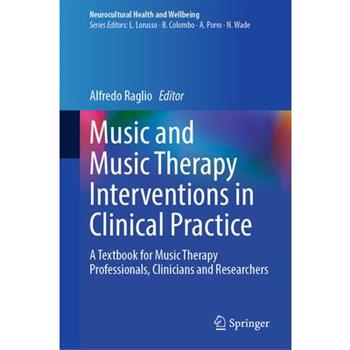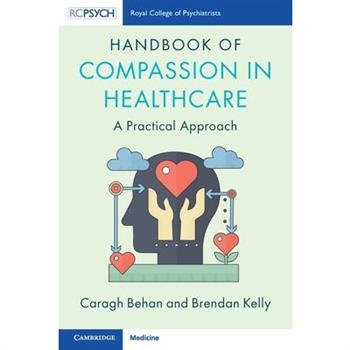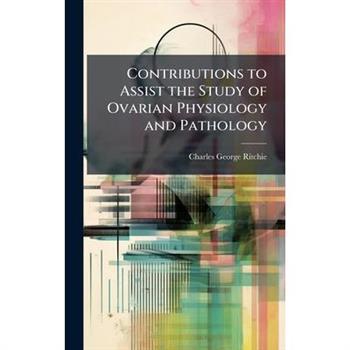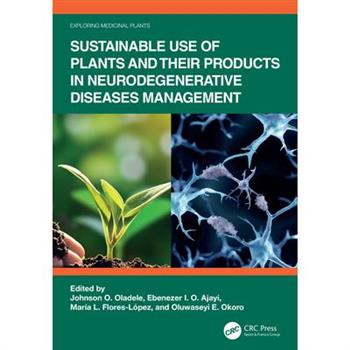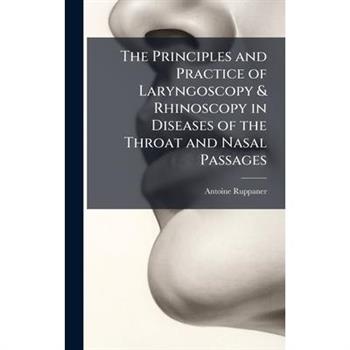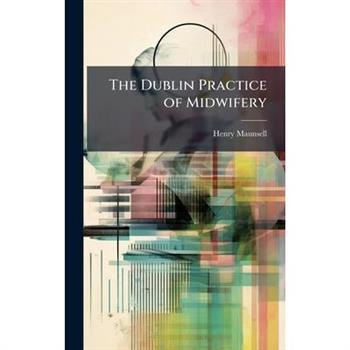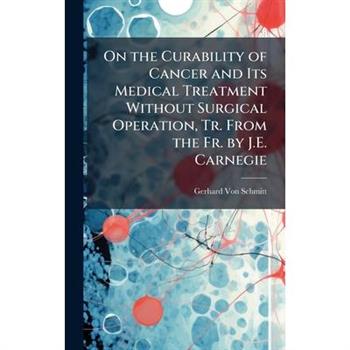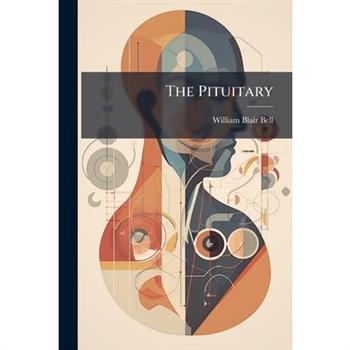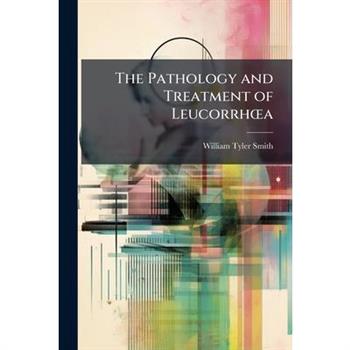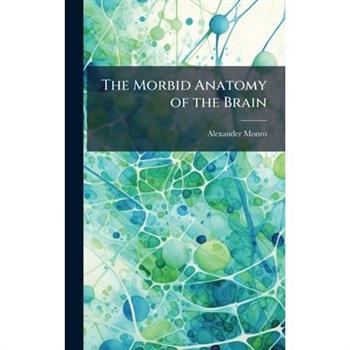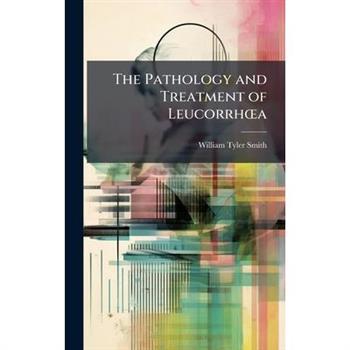Massachusetts General Hospital Study Guide for Psychiatry Exams
Prepare for success on your board and shelf exams with the fully revised Massachusetts General Hospital Study Guide for Psychiatry Exams, Second Edition. Expertly edited by renowned author and educator Dr. Theodore A. Stern as a companion to his popular and authoritative Massachusetts General Hospital Comprehensive Clinical Psychiatry, Third Edition, this practical review tool contains 1,000 unique questions with annotated answers, both in print and online. You'll have convenient, flexible access to hundreds of relevant and carefully reviewed questions from the institution trusted most by residents and practicing clinicians for its leadership in psychiatry information and reference.Contains 1,000 multiple-choice questions and annotated answers (400 more than in the first edition) that test your knowledge of every aspect of psychiatry, offering highly effective preparation for your primary certification examsIncludes new content in key areas, such as psychiatric management of patients with cardiac disease, renal disease, pulmonary disease, and gastrointestinal disease; COVID-19 infection, burns, trauma, and intensive care unit treatment; and care of LGBTQAI+ patientsDivides questions into manageable sections that correspond directly to chapters in the parent text, Massachusetts General Hospital Comprehensive Clinical Psychiatry, 3rd Edition; you'll know exactly where to find detailed information for deeper learning and reviewHelps you gain a better understanding of exam presentation and format as you study relevant content that is fully up to date with DSM-5Edited by highly accomplished and award-winning clinician and educator, Dr. Theodore A. Stern, editor of Massachusetts General Hospital Comprehensive Clinical Psychiatry, 3rd Edition, as well as the Massachusetts General Hospital Handbook of General Hospital Psychiatry, 8th EditionAn eBook version is included with purchase. The eBook allows you to access all of the text, figures and references, with the ability to search, customize your content, make notes and highlights, and have content read aloud. Additional digital ancillary content may publish up to 6 weeks following the publication date
Practical Facial Reconstruction
An ideal resource for both the novice and experienced surgeon, Practical Facial Reconstruction: Theory and Practice is a practical, step-by-step guide to facial repair, written by a highly experienced authority in the field. In this fully updated Second Edition, Dr. Andrew Kaufman walks you through decision making in repair design and execution, offering tips, pearls, and key points that make seemingly complicated flaps less complicated, and repairs more aesthetic and functionally successful. Abundant illustrations and numerous new videos provide real-world visual guidance on soft tissue facial reconstruction.Covers cheek, forehead, nose, lip, ear, and eyelid reconstruction, with ample pearls, tips, and key points for each repairWalks you through the thought process of evaluating a surgical defect, analyzing it, and designing and executing the repair to achieve optimal functional and cosmetic resultsShares Dr. Kaufman's personal tips, tricks, and pearls for every repair, with the goal of simplifying and demystifying many useful reconstruction techniquesFeatures hundreds of high-quality, step-by-step photographs and line drawings throughout, plus more than 30 all-new procedural videosCovers simpler as well as more complex repairs, including bilobed transposition flaps, helical rim advancement flaps, unilateral and bilateral rotation flaps, cartilage grafts on the nose, rhombic transposition flaps, melolabial transposition flaps, advancement flaps on the nose, lips, eyebrow, and forehead, island advancement flaps, and much moreProvides a unique theoretical and practical framework for identifying defects and developing a reconstructive plan that can be applied to a wide variety of situations beyond those covered in the bookAn eBook version is included with purchase. The eBook allows you to access all of the text, figures and references, with the ability to search, customize your content, make notes and highlights, and have content read aloud. Additional digital ancillary content may publish up to 6 weeks following the publication date
Obesity in the Black Community
Three leading experts in obesity medicine offer a comprehensive approach to the origins, obstacles, and opportunities for addressing obesity in the Black community, an unbiased resource that provides an evidence-based overview. It unifies the biopsychosocial contributors to obesity and to proposes solutions for physicians to implement.
Application of Near-Infrared Fluorescence Imaging in Cancer Surgery
This book provides a comprehensive introduction to the development and application of near-infrared fluorescence (NIRF) in cancer surgery. It thoroughly examines the history, principles, agents, functions, and devices associated with NIRF, along with the latest preclinical research and clinical applications. Special emphasis is placed on the advancements in the second NIRF window and its global implementation in cancer surgery, including innovative molecular imaging technologies in clinical translation. Additionally, the book explores the limitations and potential solutions of NIRF, offering insights into its future trends and perspectives. It serves as a valuable resource for university researchers, surgeons, radiologists, and both undergraduate and graduate students in medicine.
CPR Demystified
CPR Demystified: Everything You Need to Know to Save a Life This book was written with one simple goal: to break down the science, art, and urgency of CPR into a clear, approachable guide for people from all walks of life. Whether you're a parent, teacher, coach, healthcare worker, or just a concerned bystander, CPR Demystified equips you with the knowledge, confidence, and skill to step in and make a difference when it matters most. Every year, hundreds of thousands of people suffer sudden cardiac arrest outside of hospitals. Most won't make it-not because they couldn't be saved, but because no one nearby knew what to do.The truth is sobering: immediate CPR can double or even triple a person's chance of survival, yet too many bystanders feel unprepared or afraid to act. The truth is both startling and inspiring: you don't need a medical degree, fancy equipment, or years of training to save a life. What you need is knowledge, willingness, and the courage to act. In fact, over 70% of cardiac arrests happen at home or in public places where a bystander is the only hope. That bystander could be a stranger-or it could be you. By reading this guide, you're not just learning a skill-you're joining a global chain of heroes who refuse to stand by and do nothing. You're stepping into the role of a lifesaver. GET YOURS NOW...
Music and Music Therapy Interventions in Clinical Practice
This textbook aims to provide practical and comprehensive guidance on the application of music and music therapy in clinical settings. The chapters are written with an evidence-based approach. The first part of the volume defines the psychological, biological, and neuroscientific basis of the therapeutic use of music. Then, various chapters describe the main application techniques (both active and receptive) exploring their therapeutic rationale, purposes, applications in preventive and therapeutic-rehabilitation settings, and possible methods of assessment. An overview of the main clinical areas addressed by music-based therapeutic interventions is also presented, including references to scientific literature, systematic and meta-analytic reviews as well as studies with rigorous methodologies (Randomized Controlled Trials). The final chapter focuses on research, outlining the current state of the art and possible future scenarios within this specific context. The authors of this book are scholars and practitioners in music therapy and related disciplines with recognized experience in clinical and research settings. This book will be an invaluable tool for individuals with an interest in music therapy and its application in clinical settings, such as students studying music therapy, practicing music therapists, researchers, and professionals in related disciplines.
Distracted Doctoring
The problems related to clinical distractions have grown in a brief amount of time. In addition to the expended use of electronic medical records, handheld technologies, and AI, staffing issues are reaching crisis levels. There is a considerable threat to patient safety, professional performance, and wellness. This book exposes the breadth or risks covered in the previous edition while expanding into new topics. The team of authors represents a diverse group of experts that offer different perspectives. Distracted Doctoring is written for physicians, including anesthesiologists, surgeons and general practitioners, PAs, NPs, nurses, pharmacists, technologists, other members of the health care team (clinical and non-clinical), researchers, health care administrators and students.
Handbook of Compassion in Healthcare
What is compassion? Although a fundamental value in healthcare, this concept is often misunderstood and difficult to navigate. The authors of this book aim to answer this fundamental question, as well as offer a practical approach to how to use it in medicine. Comprised of two parts, the first part of this book explores the background to compassionate healthcare, examines how it differs from other concepts and outlines its relationship to medical professionalism. The second part offers a practical guide full of strategies and exercises to assist healthcare workers in practicing compassion by cultivating mindfulness and awareness, deepening compassion in care. This book is essential reading for medical professionals and trainees across healthcare, providing a guide to incorporating compassion into daily practice to deliver better, more compassionate care for the benefit of all. This title is also available as open access on Cambridge Core.
Contributions to Assist the Study of Ovarian Physiology and Pathology
"Contributions to Assist the Study of Ovarian Physiology and Pathology" offers a detailed exploration into the complexities of the female reproductive system. Charles George Ritchie presents a scholarly examination of ovarian function and associated diseases, providing valuable insights for medical professionals and researchers. This work delves into the physiological processes within the ovaries and meticulously documents pathological conditions, making it an essential resource for those seeking a deeper understanding of gynecological health. This historical text provides a foundational understanding of ovarian science, valuable for both historical context and continued relevance in contemporary medical studies.This work has been selected by scholars as being culturally important, and is part of the knowledge base of civilization as we know it. This work was reproduced from the original artifact, and remains as true to the original work as possible. Therefore, you will see the original copyright references, library stamps (as most of these works have been housed in our most important libraries around the world), and other notations in the work.This work is in the public domain in the United States of America, and possibly other nations. Within the United States, you may freely copy and distribute this work, as no entity (individual or corporate) has a copyright on the body of the work.As a reproduction of a historical artifact, this work may contain missing or blurred pages, poor pictures, errant marks, etc. Scholars believe, and we concur, that this work is important enough to be preserved, reproduced, and made generally available to the public. We appreciate your support of the preservation process, and thank you for being an important part of keeping this knowledge alive and relevant.
The Liver, the Great Purifying Organ of the Body
"The Liver, the Great Purifying Organ of the Body" by Charles Searle explores the vital role of the liver in maintaining overall health and addresses the prevalence of liver disorders. This historical work emphasizes the liver's importance and investigates the causes and potential treatments for diseases affecting this critical organ. Searle also includes observations on the causes and possible cures for cancer, reflecting the medical understanding of the time.This book offers insights into 19th-century medical perspectives on liver function and disease management. It remains a valuable resource for those interested in the history of medicine and the evolution of our understanding of the liver's significance to human health.This work has been selected by scholars as being culturally important, and is part of the knowledge base of civilization as we know it. This work was reproduced from the original artifact, and remains as true to the original work as possible. Therefore, you will see the original copyright references, library stamps (as most of these works have been housed in our most important libraries around the world), and other notations in the work.This work is in the public domain in the United States of America, and possibly other nations. Within the United States, you may freely copy and distribute this work, as no entity (individual or corporate) has a copyright on the body of the work.As a reproduction of a historical artifact, this work may contain missing or blurred pages, poor pictures, errant marks, etc. Scholars believe, and we concur, that this work is important enough to be preserved, reproduced, and made generally available to the public. We appreciate your support of the preservation process, and thank you for being an important part of keeping this knowledge alive and relevant.
Perfect Match
"A must-read for anyone passionate about becoming, or supporting, the next generation of physician leaders." -Dr. Brianna De Souza, MD, FAADPerfect Match is more than a dermatology residency guide-it's a mentorship movement in book form.Written by renowned dermatologist and former department chair Dr. Amy McMichael, this empowering guide offers straight talk, insider strategies, and deeply personal stories to help medical students navigate the competitive-and often intimidating-path to a successful match.Whether you're applying to dermatology or seeking mentorship as an underrepresented student in medicine, Perfect Match provides both the how-tos and the heart to help you thrive.Inside you'll learn how to: Build meaningful mentor-mentee relationshipsStand out on dermatology rotations, research, and interviewsOvercome bias, imposter syndrome, and microaggressions with strength and strategyWrite compelling personal statements and ace your ERAS applicationEmbrace failure and turn setbacks into leadershipCelebrate your identity while pursuing excellence in medicineWith candor and clarity, Dr. McMichael speaks directly to students-especially those from underrepresented backgrounds-who may feel unseen or unsure of how to succeed in high-stakes medical fields.If you're a med student, faculty mentor, or aspiring dermatologist, this book belongs on your shelf.Let Perfect Match be your mentor on the page-and your guide to matching with confidence, purpose, and power.
Perfect Match
"A must-read for anyone passionate about becoming, or supporting, the next generation of physician leaders." -Dr. Brianna De Souza, MD, FAADPerfect Match is more than a dermatology residency guide-it's a mentorship movement in book form.Written by renowned dermatologist and former department chair Dr. Amy McMichael, this empowering guide offers straight talk, insider strategies, and deeply personal stories to help medical students navigate the competitive-and often intimidating-path to a successful match.Whether you're applying to dermatology or seeking mentorship as an underrepresented student in medicine, Perfect Match provides both the how-tos and the heart to help you thrive.Inside you'll learn how to: Build meaningful mentor-mentee relationshipsStand out on dermatology rotations, research, and interviewsOvercome bias, imposter syndrome, and microaggressions with strength and strategyWrite compelling personal statements and ace your ERAS applicationEmbrace failure and turn setbacks into leadershipCelebrate your identity while pursuing excellence in medicineWith candor and clarity, Dr. McMichael speaks directly to students-especially those from underrepresented backgrounds-who may feel unseen or unsure of how to succeed in high-stakes medical fields.If you're a med student, faculty mentor, or aspiring dermatologist, this book belongs on your shelf.Let Perfect Match be your mentor on the page-and your guide to matching with confidence, purpose, and power.
The Liver, the Great Purifying Organ of the Body
"The Liver, the Great Purifying Organ of the Body" by Charles Searle explores the vital role of the liver in maintaining overall health and addresses the prevalence of liver disorders. This historical work emphasizes the liver's importance and investigates the causes and potential treatments for diseases affecting this critical organ. Searle also includes observations on the causes and possible cures for cancer, reflecting the medical understanding of the time.This book offers insights into 19th-century medical perspectives on liver function and disease management. It remains a valuable resource for those interested in the history of medicine and the evolution of our understanding of the liver's significance to human health.This work has been selected by scholars as being culturally important, and is part of the knowledge base of civilization as we know it. This work was reproduced from the original artifact, and remains as true to the original work as possible. Therefore, you will see the original copyright references, library stamps (as most of these works have been housed in our most important libraries around the world), and other notations in the work.This work is in the public domain in the United States of America, and possibly other nations. Within the United States, you may freely copy and distribute this work, as no entity (individual or corporate) has a copyright on the body of the work.As a reproduction of a historical artifact, this work may contain missing or blurred pages, poor pictures, errant marks, etc. Scholars believe, and we concur, that this work is important enough to be preserved, reproduced, and made generally available to the public. We appreciate your support of the preservation process, and thank you for being an important part of keeping this knowledge alive and relevant.
Contributions to Assist the Study of Ovarian Physiology and Pathology
"Contributions to Assist the Study of Ovarian Physiology and Pathology" offers a detailed exploration into the complexities of the female reproductive system. Charles George Ritchie presents a scholarly examination of ovarian function and associated diseases, providing valuable insights for medical professionals and researchers. This work delves into the physiological processes within the ovaries and meticulously documents pathological conditions, making it an essential resource for those seeking a deeper understanding of gynecological health. This historical text provides a foundational understanding of ovarian science, valuable for both historical context and continued relevance in contemporary medical studies.This work has been selected by scholars as being culturally important, and is part of the knowledge base of civilization as we know it. This work was reproduced from the original artifact, and remains as true to the original work as possible. Therefore, you will see the original copyright references, library stamps (as most of these works have been housed in our most important libraries around the world), and other notations in the work.This work is in the public domain in the United States of America, and possibly other nations. Within the United States, you may freely copy and distribute this work, as no entity (individual or corporate) has a copyright on the body of the work.As a reproduction of a historical artifact, this work may contain missing or blurred pages, poor pictures, errant marks, etc. Scholars believe, and we concur, that this work is important enough to be preserved, reproduced, and made generally available to the public. We appreciate your support of the preservation process, and thank you for being an important part of keeping this knowledge alive and relevant.
I Know You by Heart
"...highly recommended reading that should be tops on any caregiver's list." ---- D. Donovan, Sr. Reviewer, Midwest Book Review In the U.S. today, over 5.8 million Americans are living with Alzheimer's Disease or related dementia. Each of these individuals has a story. And each one has caregivers with their own stories. You have questions - so many questions about what is happening now, and what is to come. How do I cope with this new manifestation of the disease? How do I prepare for an uncertain future? This is especially true when just navigating your way through each day can be overwhelming. Contained within these pages are answers to some of your questions as well as strategies for your future. In navigating this journey, it is important to remember two essential truths. The first is that the body may fail, and the mind may wander, but the spirit-the person inside-remains intact. The caregiver's role is to maximize the remaining strengths of the person they care for. The second is that you are not alone. Caregiving is often an isolating experience. Stories from the lives of others let us know that our experiences are not unique. Be assured that many have gone before, and others are walking the same road today. This is "I Know You by Heart: Navigating the Dementia Journey."
Clinical Neurorespiratory Medicine
Diseases of the nervous system and muscles often cause problems with breathing, coughing and swallowing. Profound knowledge is required to interpret and treat these conditions correctly, while lack of it results in treatment decisions which are burdensome or outright dangerous for the patients. Taking the reader through the neuroanatomy and neurophysiology of breathing, swallowing and coughing, this comprehensive text clarifies the diagnosis and treatment of respiratory impairments from diseases of the brain, spinal cord, peripheral nervous system and muscles. Practical advice is offered on treatment in neurological, medical, intensive care and palliative care units as well as in rehabilitation and long-term care. Written by renowned neurologists, with decades of experience, clinicians and healthcare professionals working in neurology, pulmonology, anaesthesiology, intensive care and paediatrics will find this guide indispensable.
Sustainable Use of Plants and Their Products in Neurodegenerative Diseases Management
Sustainable Use of Plants and their Products in Neurodegenerative Diseases Management addresses the prevalence and pathogenesis of neurodegenerative diseases, and the roles of phytoconstituents in mitigating the progression of neurodegenerative diseases.
Atlas of Leprosy
Atlas of Leprosy comprehensively covers the varied manifestations, including common and uncommon presentations, of leprosy, supported by patient photographs and additional video content, to assist medical practitioners diagnose leprosy in the early stages.With a detailed guide to approaching bedside diagnostic tests, this book will help readers to visualise common and uncommon presentations of leprosy, enabling effective diagnosis and treatment in this pre-elimination era, where increasingly difficulties in identifying its early stages can lead to preventable morbidity and deformity.Clinicians, dermatologists and trainees alike will find the wealth of high-quality illustrations and video demonstrations a vital guide to better diagnose this mycobacterial disease and combat resistance, relapse, reactions and any other difficult challenges posed.
The Principles and Practice of Laryngoscopy & Rhinoscopy in Diseases of the Throat and Nasal Passages
The Principles and Practice of Laryngoscopy & Rhinoscopy in Diseases of the Throat and Nasal Passages by Antoine Ruppaner offers a detailed exploration of diagnostic techniques used in the mid-19th century. Originally designed for physicians and students, this historical text provides insights into the methods of laryngoscopy and rhinoscopy, essential tools for examining diseases of the throat and nasal passages. Ruppaner's work is invaluable for those interested in the history of medicine, otolaryngology, and the evolution of diagnostic procedures. It showcases the state-of-the-art medical practices of its time, making it a fascinating read for medical historians and anyone curious about the development of medical technology.This work has been selected by scholars as being culturally important, and is part of the knowledge base of civilization as we know it. This work was reproduced from the original artifact, and remains as true to the original work as possible. Therefore, you will see the original copyright references, library stamps (as most of these works have been housed in our most important libraries around the world), and other notations in the work.This work is in the public domain in the United States of America, and possibly other nations. Within the United States, you may freely copy and distribute this work, as no entity (individual or corporate) has a copyright on the body of the work.As a reproduction of a historical artifact, this work may contain missing or blurred pages, poor pictures, errant marks, etc. Scholars believe, and we concur, that this work is important enough to be preserved, reproduced, and made generally available to the public. We appreciate your support of the preservation process, and thank you for being an important part of keeping this knowledge alive and relevant.
The Principles and Practice of Laryngoscopy & Rhinoscopy in Diseases of the Throat and Nasal Passages
The Principles and Practice of Laryngoscopy & Rhinoscopy in Diseases of the Throat and Nasal Passages by Antoine Ruppaner offers a detailed exploration of diagnostic techniques used in the mid-19th century. Originally designed for physicians and students, this historical text provides insights into the methods of laryngoscopy and rhinoscopy, essential tools for examining diseases of the throat and nasal passages. Ruppaner's work is invaluable for those interested in the history of medicine, otolaryngology, and the evolution of diagnostic procedures. It showcases the state-of-the-art medical practices of its time, making it a fascinating read for medical historians and anyone curious about the development of medical technology.This work has been selected by scholars as being culturally important, and is part of the knowledge base of civilization as we know it. This work was reproduced from the original artifact, and remains as true to the original work as possible. Therefore, you will see the original copyright references, library stamps (as most of these works have been housed in our most important libraries around the world), and other notations in the work.This work is in the public domain in the United States of America, and possibly other nations. Within the United States, you may freely copy and distribute this work, as no entity (individual or corporate) has a copyright on the body of the work.As a reproduction of a historical artifact, this work may contain missing or blurred pages, poor pictures, errant marks, etc. Scholars believe, and we concur, that this work is important enough to be preserved, reproduced, and made generally available to the public. We appreciate your support of the preservation process, and thank you for being an important part of keeping this knowledge alive and relevant.
Inhalation in the Treatment of Disease
"Inhalation in the Treatment of Disease" by Jacob Solis Cohen, originally published in 1876, offers a detailed exploration of inhalation therapy as practiced in the late 19th century. This historical text delves into the therapeutic use of inhaled substances for treating various respiratory ailments. Cohen provides insights into the techniques, apparatus, and substances used during this period, making it a valuable resource for understanding the evolution of pulmonary medicine. The book covers both theoretical underpinnings and practical applications, making it relevant to historians of medicine, researchers interested in alternative therapies, and anyone seeking a glimpse into past medical practices. While medical knowledge has advanced significantly since its original publication, "Inhalation in the Treatment of Disease" remains an important historical document, illustrating the approaches and beliefs of a bygone era in healthcare.This work has been selected by scholars as being culturally important, and is part of the knowledge base of civilization as we know it. This work was reproduced from the original artifact, and remains as true to the original work as possible. Therefore, you will see the original copyright references, library stamps (as most of these works have been housed in our most important libraries around the world), and other notations in the work.This work is in the public domain in the United States of America, and possibly other nations. Within the United States, you may freely copy and distribute this work, as no entity (individual or corporate) has a copyright on the body of the work.As a reproduction of a historical artifact, this work may contain missing or blurred pages, poor pictures, errant marks, etc. Scholars believe, and we concur, that this work is important enough to be preserved, reproduced, and made generally available to the public. We appreciate your support of the preservation process, and thank you for being an important part of keeping this knowledge alive and relevant.
The Dublin Practice of Midwifery
"The Dublin Practice of Midwifery," originally published in 1834, offers a detailed insight into the medical practices and knowledge surrounding childbirth during the early 19th century. Authored by Henry Maunsell, this historical text provides a comprehensive overview of midwifery as it was practiced in Dublin, Ireland. The book covers various aspects of obstetrics, including prenatal care, labor and delivery techniques, and postpartum management. This work is invaluable for historians of medicine, those interested in women's health, and anyone seeking to understand the evolution of medical practices. "The Dublin Practice of Midwifery" serves as a primary source, shedding light on the challenges and advancements in obstetric care during a transformative period in medical history.This work has been selected by scholars as being culturally important, and is part of the knowledge base of civilization as we know it. This work was reproduced from the original artifact, and remains as true to the original work as possible. Therefore, you will see the original copyright references, library stamps (as most of these works have been housed in our most important libraries around the world), and other notations in the work.This work is in the public domain in the United States of America, and possibly other nations. Within the United States, you may freely copy and distribute this work, as no entity (individual or corporate) has a copyright on the body of the work.As a reproduction of a historical artifact, this work may contain missing or blurred pages, poor pictures, errant marks, etc. Scholars believe, and we concur, that this work is important enough to be preserved, reproduced, and made generally available to the public. We appreciate your support of the preservation process, and thank you for being an important part of keeping this knowledge alive and relevant.
The Pituitary
The Pituitary, by William Blair Bell, offers a comprehensive study of the pituitary gland as understood in the early 20th century. This detailed exploration covers the morphology, physiology, and pathology of the pituitary, providing a foundational understanding of its crucial role in the human body. Bell meticulously examines the surgical treatments applicable to pituitary disorders, offering insights into the medical practices of the time. The book also includes an account of the therapeutic uses of pituitary extracts, reflecting the early applications of hormone therapy. This work serves as a valuable historical record for those interested in the evolution of endocrinology and surgical techniques related to the pituitary gland. "The Pituitary" is essential reading for medical historians, endocrinologists, and anyone seeking a deeper understanding of the pituitary's significance in health and disease.This work has been selected by scholars as being culturally important, and is part of the knowledge base of civilization as we know it. This work was reproduced from the original artifact, and remains as true to the original work as possible. Therefore, you will see the original copyright references, library stamps (as most of these works have been housed in our most important libraries around the world), and other notations in the work.This work is in the public domain in the United States of America, and possibly other nations. Within the United States, you may freely copy and distribute this work, as no entity (individual or corporate) has a copyright on the body of the work.As a reproduction of a historical artifact, this work may contain missing or blurred pages, poor pictures, errant marks, etc. Scholars believe, and we concur, that this work is important enough to be preserved, reproduced, and made generally available to the public. We appreciate your support of the preservation process, and thank you for being an important part of keeping this knowledge alive and relevant.
Throat Ailments
"Throat Ailments: More Especially the Enlarged Tonsil and Elongated Uvula" by James Yearsley offers a detailed examination of common throat ailments prevalent in the mid-19th century. Focusing primarily on enlarged tonsils and elongated uvulas, Yearsley provides insights into the diagnosis and treatment of these conditions based on the medical knowledge of his time. This historical medical text is valuable for those interested in the evolution of medical practices and the understanding of diseases from a historical perspective. While medical approaches have advanced significantly since its publication in 1859, this book provides a unique window into the challenges and methods of treating throat ailments during that era.This work has been selected by scholars as being culturally important, and is part of the knowledge base of civilization as we know it. This work was reproduced from the original artifact, and remains as true to the original work as possible. Therefore, you will see the original copyright references, library stamps (as most of these works have been housed in our most important libraries around the world), and other notations in the work.This work is in the public domain in the United States of America, and possibly other nations. Within the United States, you may freely copy and distribute this work, as no entity (individual or corporate) has a copyright on the body of the work.As a reproduction of a historical artifact, this work may contain missing or blurred pages, poor pictures, errant marks, etc. Scholars believe, and we concur, that this work is important enough to be preserved, reproduced, and made generally available to the public. We appreciate your support of the preservation process, and thank you for being an important part of keeping this knowledge alive and relevant.
On Ovarian Dropsy
"On Ovarian Dropsy: Its Nature, Diagnosis & Treatment" by Isaac Baker Brown, offers a detailed exploration of ovarian dropsy, also known as ovarian cysts, from a 19th-century medical perspective. This historical text delves into the understanding, diagnostic approaches, and treatment methods prevalent during the mid-1800s. Brown's work provides valuable insights into the medical practices and knowledge of the era, making it a significant resource for historians of medicine and those interested in the evolution of gynecological treatments. The book offers a window into the challenges and advancements in diagnosing and managing a condition that continues to be relevant in modern gynecology. A fascinating look at the history of medical science.This work has been selected by scholars as being culturally important, and is part of the knowledge base of civilization as we know it. This work was reproduced from the original artifact, and remains as true to the original work as possible. Therefore, you will see the original copyright references, library stamps (as most of these works have been housed in our most important libraries around the world), and other notations in the work.This work is in the public domain in the United States of America, and possibly other nations. Within the United States, you may freely copy and distribute this work, as no entity (individual or corporate) has a copyright on the body of the work.As a reproduction of a historical artifact, this work may contain missing or blurred pages, poor pictures, errant marks, etc. Scholars believe, and we concur, that this work is important enough to be preserved, reproduced, and made generally available to the public. We appreciate your support of the preservation process, and thank you for being an important part of keeping this knowledge alive and relevant.
On the Curability of Cancer and Its Medical Treatment Without Surgical Operation, Tr. From the Fr. by J.E. Carnegie
"On the Curability of Cancer and Its Medical Treatment Without Surgical Operation" presents a historical perspective on cancer treatment during the 19th century. Translated from the French, this work explores medical approaches to cancer that eschew surgical intervention, offering insights into the beliefs and practices of the time. This book provides a fascinating glimpse into the history of medicine and the evolution of cancer therapies. It is of interest to anyone studying the history of medicine and alternative treatments.This work has been selected by scholars as being culturally important, and is part of the knowledge base of civilization as we know it. This work was reproduced from the original artifact, and remains as true to the original work as possible. Therefore, you will see the original copyright references, library stamps (as most of these works have been housed in our most important libraries around the world), and other notations in the work.This work is in the public domain in the United States of America, and possibly other nations. Within the United States, you may freely copy and distribute this work, as no entity (individual or corporate) has a copyright on the body of the work.As a reproduction of a historical artifact, this work may contain missing or blurred pages, poor pictures, errant marks, etc. Scholars believe, and we concur, that this work is important enough to be preserved, reproduced, and made generally available to the public. We appreciate your support of the preservation process, and thank you for being an important part of keeping this knowledge alive and relevant.
The Pituitary
The Pituitary, by William Blair Bell, offers a comprehensive study of the pituitary gland as understood in the early 20th century. This detailed exploration covers the morphology, physiology, and pathology of the pituitary, providing a foundational understanding of its crucial role in the human body. Bell meticulously examines the surgical treatments applicable to pituitary disorders, offering insights into the medical practices of the time. The book also includes an account of the therapeutic uses of pituitary extracts, reflecting the early applications of hormone therapy. This work serves as a valuable historical record for those interested in the evolution of endocrinology and surgical techniques related to the pituitary gland. "The Pituitary" is essential reading for medical historians, endocrinologists, and anyone seeking a deeper understanding of the pituitary's significance in health and disease.This work has been selected by scholars as being culturally important, and is part of the knowledge base of civilization as we know it. This work was reproduced from the original artifact, and remains as true to the original work as possible. Therefore, you will see the original copyright references, library stamps (as most of these works have been housed in our most important libraries around the world), and other notations in the work.This work is in the public domain in the United States of America, and possibly other nations. Within the United States, you may freely copy and distribute this work, as no entity (individual or corporate) has a copyright on the body of the work.As a reproduction of a historical artifact, this work may contain missing or blurred pages, poor pictures, errant marks, etc. Scholars believe, and we concur, that this work is important enough to be preserved, reproduced, and made generally available to the public. We appreciate your support of the preservation process, and thank you for being an important part of keeping this knowledge alive and relevant.
Inhalation in the Treatment of Disease
"Inhalation in the Treatment of Disease" by Jacob Solis Cohen, originally published in 1876, offers a detailed exploration of inhalation therapy as practiced in the late 19th century. This historical text delves into the therapeutic use of inhaled substances for treating various respiratory ailments. Cohen provides insights into the techniques, apparatus, and substances used during this period, making it a valuable resource for understanding the evolution of pulmonary medicine. The book covers both theoretical underpinnings and practical applications, making it relevant to historians of medicine, researchers interested in alternative therapies, and anyone seeking a glimpse into past medical practices. While medical knowledge has advanced significantly since its original publication, "Inhalation in the Treatment of Disease" remains an important historical document, illustrating the approaches and beliefs of a bygone era in healthcare.This work has been selected by scholars as being culturally important, and is part of the knowledge base of civilization as we know it. This work was reproduced from the original artifact, and remains as true to the original work as possible. Therefore, you will see the original copyright references, library stamps (as most of these works have been housed in our most important libraries around the world), and other notations in the work.This work is in the public domain in the United States of America, and possibly other nations. Within the United States, you may freely copy and distribute this work, as no entity (individual or corporate) has a copyright on the body of the work.As a reproduction of a historical artifact, this work may contain missing or blurred pages, poor pictures, errant marks, etc. Scholars believe, and we concur, that this work is important enough to be preserved, reproduced, and made generally available to the public. We appreciate your support of the preservation process, and thank you for being an important part of keeping this knowledge alive and relevant.
On Ovarian Dropsy
"On Ovarian Dropsy: Its Nature, Diagnosis & Treatment" by Isaac Baker Brown, offers a detailed exploration of ovarian dropsy, also known as ovarian cysts, from a 19th-century medical perspective. This historical text delves into the understanding, diagnostic approaches, and treatment methods prevalent during the mid-1800s. Brown's work provides valuable insights into the medical practices and knowledge of the era, making it a significant resource for historians of medicine and those interested in the evolution of gynecological treatments. The book offers a window into the challenges and advancements in diagnosing and managing a condition that continues to be relevant in modern gynecology. A fascinating look at the history of medical science.This work has been selected by scholars as being culturally important, and is part of the knowledge base of civilization as we know it. This work was reproduced from the original artifact, and remains as true to the original work as possible. Therefore, you will see the original copyright references, library stamps (as most of these works have been housed in our most important libraries around the world), and other notations in the work.This work is in the public domain in the United States of America, and possibly other nations. Within the United States, you may freely copy and distribute this work, as no entity (individual or corporate) has a copyright on the body of the work.As a reproduction of a historical artifact, this work may contain missing or blurred pages, poor pictures, errant marks, etc. Scholars believe, and we concur, that this work is important enough to be preserved, reproduced, and made generally available to the public. We appreciate your support of the preservation process, and thank you for being an important part of keeping this knowledge alive and relevant.
Throat Ailments
"Throat Ailments: More Especially the Enlarged Tonsil and Elongated Uvula" by James Yearsley offers a detailed examination of common throat ailments prevalent in the mid-19th century. Focusing primarily on enlarged tonsils and elongated uvulas, Yearsley provides insights into the diagnosis and treatment of these conditions based on the medical knowledge of his time. This historical medical text is valuable for those interested in the evolution of medical practices and the understanding of diseases from a historical perspective. While medical approaches have advanced significantly since its publication in 1859, this book provides a unique window into the challenges and methods of treating throat ailments during that era.This work has been selected by scholars as being culturally important, and is part of the knowledge base of civilization as we know it. This work was reproduced from the original artifact, and remains as true to the original work as possible. Therefore, you will see the original copyright references, library stamps (as most of these works have been housed in our most important libraries around the world), and other notations in the work.This work is in the public domain in the United States of America, and possibly other nations. Within the United States, you may freely copy and distribute this work, as no entity (individual or corporate) has a copyright on the body of the work.As a reproduction of a historical artifact, this work may contain missing or blurred pages, poor pictures, errant marks, etc. Scholars believe, and we concur, that this work is important enough to be preserved, reproduced, and made generally available to the public. We appreciate your support of the preservation process, and thank you for being an important part of keeping this knowledge alive and relevant.
The Dublin Practice of Midwifery
"The Dublin Practice of Midwifery," originally published in 1834, offers a detailed insight into the medical practices and knowledge surrounding childbirth during the early 19th century. Authored by Henry Maunsell, this historical text provides a comprehensive overview of midwifery as it was practiced in Dublin, Ireland. The book covers various aspects of obstetrics, including prenatal care, labor and delivery techniques, and postpartum management. This work is invaluable for historians of medicine, those interested in women's health, and anyone seeking to understand the evolution of medical practices. "The Dublin Practice of Midwifery" serves as a primary source, shedding light on the challenges and advancements in obstetric care during a transformative period in medical history.This work has been selected by scholars as being culturally important, and is part of the knowledge base of civilization as we know it. This work was reproduced from the original artifact, and remains as true to the original work as possible. Therefore, you will see the original copyright references, library stamps (as most of these works have been housed in our most important libraries around the world), and other notations in the work.This work is in the public domain in the United States of America, and possibly other nations. Within the United States, you may freely copy and distribute this work, as no entity (individual or corporate) has a copyright on the body of the work.As a reproduction of a historical artifact, this work may contain missing or blurred pages, poor pictures, errant marks, etc. Scholars believe, and we concur, that this work is important enough to be preserved, reproduced, and made generally available to the public. We appreciate your support of the preservation process, and thank you for being an important part of keeping this knowledge alive and relevant.
Perfect Match
"A must-read for anyone passionate about becoming, or supporting, the next generation of physician leaders." -Dr. Brianna De Souza, MD, FAADPerfect Match is more than a dermatology residency guide-it's a mentorship movement in book form.Written by renowned dermatologist and former department chair Dr. Amy McMichael, this empowering guide offers straight talk, insider strategies, and deeply personal stories to help medical students navigate the competitive-and often intimidating-path to a successful match.Whether you're applying to dermatology or seeking mentorship as an underrepresented student in medicine, Perfect Match provides both the how-tos and the heart to help you thrive.Inside you'll learn how to: Build meaningful mentor-mentee relationshipsStand out on dermatology rotations, research, and interviewsOvercome bias, imposter syndrome, and microaggressions with strength and strategyWrite compelling personal statements and ace your ERAS applicationEmbrace failure and turn setbacks into leadershipCelebrate your identity while pursuing excellence in medicineWith candor and clarity, Dr. McMichael speaks directly to students-especially those from underrepresented backgrounds-who may feel unseen or unsure of how to succeed in high-stakes medical fields.If you're a med student, faculty mentor, or aspiring dermatologist, this book belongs on your shelf.Let Perfect Match be your mentor on the page-and your guide to matching with confidence, purpose, and power.
On the Curability of Cancer and Its Medical Treatment Without Surgical Operation, Tr. From the Fr. by J.E. Carnegie
"On the Curability of Cancer and Its Medical Treatment Without Surgical Operation" presents a historical perspective on cancer treatment during the 19th century. Translated from the French, this work explores medical approaches to cancer that eschew surgical intervention, offering insights into the beliefs and practices of the time. This book provides a fascinating glimpse into the history of medicine and the evolution of cancer therapies. It is of interest to anyone studying the history of medicine and alternative treatments.This work has been selected by scholars as being culturally important, and is part of the knowledge base of civilization as we know it. This work was reproduced from the original artifact, and remains as true to the original work as possible. Therefore, you will see the original copyright references, library stamps (as most of these works have been housed in our most important libraries around the world), and other notations in the work.This work is in the public domain in the United States of America, and possibly other nations. Within the United States, you may freely copy and distribute this work, as no entity (individual or corporate) has a copyright on the body of the work.As a reproduction of a historical artifact, this work may contain missing or blurred pages, poor pictures, errant marks, etc. Scholars believe, and we concur, that this work is important enough to be preserved, reproduced, and made generally available to the public. We appreciate your support of the preservation process, and thank you for being an important part of keeping this knowledge alive and relevant.
On Cancer of the Breast
"On Cancer of the Breast" offers a detailed exploration of breast cancer as understood in the late 19th century. Written by Thomas William Nunn, the book provides insights into the diagnosis, pathology, and treatment approaches prevalent during this period. This historical text sheds light on the evolution of medical science and the ongoing quest to understand and combat cancer. A valuable resource for those interested in the history of medicine and the development of oncology, this work captures a crucial chapter in the fight against a devastating disease.This work has been selected by scholars as being culturally important, and is part of the knowledge base of civilization as we know it. This work was reproduced from the original artifact, and remains as true to the original work as possible. Therefore, you will see the original copyright references, library stamps (as most of these works have been housed in our most important libraries around the world), and other notations in the work.This work is in the public domain in the United States of America, and possibly other nations. Within the United States, you may freely copy and distribute this work, as no entity (individual or corporate) has a copyright on the body of the work.As a reproduction of a historical artifact, this work may contain missing or blurred pages, poor pictures, errant marks, etc. Scholars believe, and we concur, that this work is important enough to be preserved, reproduced, and made generally available to the public. We appreciate your support of the preservation process, and thank you for being an important part of keeping this knowledge alive and relevant.
Journal of Cancer Research
"Journal of Cancer Research, Volume 2" presents a collection of significant research and findings in the field of oncology, originally published in 1861. This historical volume offers a fascinating glimpse into the early stages of cancer research, documenting the methodologies, theories, and observations of leading researchers at the time. Compiled by the American Association For Cancer Research and the Columbia University Institute Of Cancer Research, this journal provides invaluable insights into the evolution of our understanding of cancer.Researchers, historians of medicine, and anyone interested in the historical development of cancer treatment will find this volume an essential resource. It showcases the pioneering efforts to unravel the complexities of this disease, providing context for contemporary advancements in oncology. This journal is a testament to the ongoing quest to conquer cancer and a tribute to those who laid the foundation for modern cancer research.This work has been selected by scholars as being culturally important, and is part of the knowledge base of civilization as we know it. This work was reproduced from the original artifact, and remains as true to the original work as possible. Therefore, you will see the original copyright references, library stamps (as most of these works have been housed in our most important libraries around the world), and other notations in the work.This work is in the public domain in the United States of America, and possibly other nations. Within the United States, you may freely copy and distribute this work, as no entity (individual or corporate) has a copyright on the body of the work.As a reproduction of a historical artifact, this work may contain missing or blurred pages, poor pictures, errant marks, etc. Scholars believe, and we concur, that this work is important enough to be preserved, reproduced, and made generally available to the public. We appreciate your support of the preservation process, and thank you for being an important part of keeping this knowledge alive and relevant.
The Morbid Anatomy of the Brain
"The Morbid Anatomy of the Brain," by Alexander Monro, offers a detailed exploration of the brain's anatomical structure and the pathological conditions that affect it. Written in 1827, this work provides valuable insights into the medical understanding of the brain during the early 19th century. Monro's meticulous descriptions and observations make this book a significant historical document for those interested in the evolution of neurology and the history of medicine. This book remains relevant for medical historians, students, and anyone fascinated by the intricate workings of the human brain and the progress of medical science. It stands as a testament to the dedication and scholarship of early medical practitioners like Alexander Monro.This work has been selected by scholars as being culturally important, and is part of the knowledge base of civilization as we know it. This work was reproduced from the original artifact, and remains as true to the original work as possible. Therefore, you will see the original copyright references, library stamps (as most of these works have been housed in our most important libraries around the world), and other notations in the work.This work is in the public domain in the United States of America, and possibly other nations. Within the United States, you may freely copy and distribute this work, as no entity (individual or corporate) has a copyright on the body of the work.As a reproduction of a historical artifact, this work may contain missing or blurred pages, poor pictures, errant marks, etc. Scholars believe, and we concur, that this work is important enough to be preserved, reproduced, and made generally available to the public. We appreciate your support of the preservation process, and thank you for being an important part of keeping this knowledge alive and relevant.
Diseases of the Ovaries
Diseases of the Ovaries: Their Diagnosis and Treatment, by Spencer Wells, offers a detailed exploration into the understanding and management of ovarian diseases during the mid-19th century. This comprehensive text provides insights into the diagnostic methods and therapeutic approaches prevalent at the time. Wells meticulously documents various ovarian conditions, presenting a valuable historical perspective on the evolution of gynecological medicine. The book serves as a significant resource for those interested in the history of medicine, particularly the advancements and challenges in diagnosing and treating diseases affecting women's health.This work has been selected by scholars as being culturally important, and is part of the knowledge base of civilization as we know it. This work was reproduced from the original artifact, and remains as true to the original work as possible. Therefore, you will see the original copyright references, library stamps (as most of these works have been housed in our most important libraries around the world), and other notations in the work.This work is in the public domain in the United States of America, and possibly other nations. Within the United States, you may freely copy and distribute this work, as no entity (individual or corporate) has a copyright on the body of the work.As a reproduction of a historical artifact, this work may contain missing or blurred pages, poor pictures, errant marks, etc. Scholars believe, and we concur, that this work is important enough to be preserved, reproduced, and made generally available to the public. We appreciate your support of the preservation process, and thank you for being an important part of keeping this knowledge alive and relevant.
A Descriptive Catalogue of the New Sydenham Society’s Atlas of Portraits of Diseases of the Skin
"A Descriptive Catalogue of the New Sydenham Society's Atlas of Portraits of Diseases of the Skin" offers a detailed guide to a landmark publication in the history of dermatology. Compiled by Jonathan Hutchinson for the New Sydenham Society, this catalogue meticulously documents an atlas renowned for its realistic and comprehensive depiction of various skin ailments. Published in 1869, the work provides invaluable insights into the understanding and diagnosis of skin diseases during the 19th century. The catalogue serves as a key resource for medical historians, dermatologists, and anyone interested in the evolution of medical illustration and the study of skin pathology.This work has been selected by scholars as being culturally important, and is part of the knowledge base of civilization as we know it. This work was reproduced from the original artifact, and remains as true to the original work as possible. Therefore, you will see the original copyright references, library stamps (as most of these works have been housed in our most important libraries around the world), and other notations in the work.This work is in the public domain in the United States of America, and possibly other nations. Within the United States, you may freely copy and distribute this work, as no entity (individual or corporate) has a copyright on the body of the work.As a reproduction of a historical artifact, this work may contain missing or blurred pages, poor pictures, errant marks, etc. Scholars believe, and we concur, that this work is important enough to be preserved, reproduced, and made generally available to the public. We appreciate your support of the preservation process, and thank you for being an important part of keeping this knowledge alive and relevant.
Lectures On the Treatment of Fibroid Tumors of the Uterus
"Lectures On the Treatment of Fibroid Tumors of the Uterus" by Franklin Henry Martin offers a detailed exploration of medical practices and understanding surrounding fibroid tumors in the late 19th century. This volume provides insights into the diagnostic and therapeutic approaches employed during that era, reflecting the state of medical knowledge and technology at the time. Martin's lectures delve into the various methods of treating fibroid tumors, offering a historical perspective on gynecological practices. This work is a valuable resource for medical historians, students of medicine, and anyone interested in the evolution of medical treatments for women's health issues. The book offers a glimpse into the challenges and innovations in the field of gynecology during a period of significant medical advancement.This work has been selected by scholars as being culturally important, and is part of the knowledge base of civilization as we know it. This work was reproduced from the original artifact, and remains as true to the original work as possible. Therefore, you will see the original copyright references, library stamps (as most of these works have been housed in our most important libraries around the world), and other notations in the work.This work is in the public domain in the United States of America, and possibly other nations. Within the United States, you may freely copy and distribute this work, as no entity (individual or corporate) has a copyright on the body of the work.As a reproduction of a historical artifact, this work may contain missing or blurred pages, poor pictures, errant marks, etc. Scholars believe, and we concur, that this work is important enough to be preserved, reproduced, and made generally available to the public. We appreciate your support of the preservation process, and thank you for being an important part of keeping this knowledge alive and relevant.
The Pathology and Treatment of Leucorrh?”a
"The Pathology and Treatment of Leucorrh?"a," by William Tyler Smith, offers a detailed exploration of leucorrhea, a condition characterized by whitish vaginal discharge. Published in 1855, this historical medical text provides insights into the understanding and treatment of this ailment during the 19th century. Smith's work delves into the causes, symptoms, and various therapeutic approaches prevalent at the time, reflecting the medical knowledge and practices of the era. This book serves as a valuable resource for those interested in the history of medicine, particularly in the fields of gynecology and women's health, offering a glimpse into the diagnostic and treatment methods of the past.This work has been selected by scholars as being culturally important, and is part of the knowledge base of civilization as we know it. This work was reproduced from the original artifact, and remains as true to the original work as possible. Therefore, you will see the original copyright references, library stamps (as most of these works have been housed in our most important libraries around the world), and other notations in the work.This work is in the public domain in the United States of America, and possibly other nations. Within the United States, you may freely copy and distribute this work, as no entity (individual or corporate) has a copyright on the body of the work.As a reproduction of a historical artifact, this work may contain missing or blurred pages, poor pictures, errant marks, etc. Scholars believe, and we concur, that this work is important enough to be preserved, reproduced, and made generally available to the public. We appreciate your support of the preservation process, and thank you for being an important part of keeping this knowledge alive and relevant.
The Treatment of Pelvic Inflammations Through the Vagina
"The Treatment of Pelvic Inflammations Through the Vagina" by William Rice Pryor, published in 1899, offers a detailed look into the medical practices of the late 19th century. This work provides insights into the diagnosis and treatment of pelvic inflammatory diseases, specifically focusing on vaginal approaches. Pryor's text is invaluable for understanding the historical context of gynecological medicine and the evolution of treatment methodologies during a period of significant medical advancement. The book serves as a resource for medical historians, students, and practitioners interested in tracing the development of gynecological procedures and the management of women's health issues. It reflects the medical knowledge and therapeutic approaches prevalent at the time, offering a unique perspective on the challenges and innovations in women's healthcare.This work has been selected by scholars as being culturally important, and is part of the knowledge base of civilization as we know it. This work was reproduced from the original artifact, and remains as true to the original work as possible. Therefore, you will see the original copyright references, library stamps (as most of these works have been housed in our most important libraries around the world), and other notations in the work.This work is in the public domain in the United States of America, and possibly other nations. Within the United States, you may freely copy and distribute this work, as no entity (individual or corporate) has a copyright on the body of the work.As a reproduction of a historical artifact, this work may contain missing or blurred pages, poor pictures, errant marks, etc. Scholars believe, and we concur, that this work is important enough to be preserved, reproduced, and made generally available to the public. We appreciate your support of the preservation process, and thank you for being an important part of keeping this knowledge alive and relevant.
The Morbid Anatomy of the Brain
"The Morbid Anatomy of the Brain," by Alexander Monro, offers a detailed exploration of the brain's anatomical structure and the pathological conditions that affect it. Written in 1827, this work provides valuable insights into the medical understanding of the brain during the early 19th century. Monro's meticulous descriptions and observations make this book a significant historical document for those interested in the evolution of neurology and the history of medicine. This book remains relevant for medical historians, students, and anyone fascinated by the intricate workings of the human brain and the progress of medical science. It stands as a testament to the dedication and scholarship of early medical practitioners like Alexander Monro.This work has been selected by scholars as being culturally important, and is part of the knowledge base of civilization as we know it. This work was reproduced from the original artifact, and remains as true to the original work as possible. Therefore, you will see the original copyright references, library stamps (as most of these works have been housed in our most important libraries around the world), and other notations in the work.This work is in the public domain in the United States of America, and possibly other nations. Within the United States, you may freely copy and distribute this work, as no entity (individual or corporate) has a copyright on the body of the work.As a reproduction of a historical artifact, this work may contain missing or blurred pages, poor pictures, errant marks, etc. Scholars believe, and we concur, that this work is important enough to be preserved, reproduced, and made generally available to the public. We appreciate your support of the preservation process, and thank you for being an important part of keeping this knowledge alive and relevant.
The Treatment of Pelvic Inflammations Through the Vagina
"The Treatment of Pelvic Inflammations Through the Vagina" by William Rice Pryor, published in 1899, offers a detailed look into the medical practices of the late 19th century. This work provides insights into the diagnosis and treatment of pelvic inflammatory diseases, specifically focusing on vaginal approaches. Pryor's text is invaluable for understanding the historical context of gynecological medicine and the evolution of treatment methodologies during a period of significant medical advancement. The book serves as a resource for medical historians, students, and practitioners interested in tracing the development of gynecological procedures and the management of women's health issues. It reflects the medical knowledge and therapeutic approaches prevalent at the time, offering a unique perspective on the challenges and innovations in women's healthcare.This work has been selected by scholars as being culturally important, and is part of the knowledge base of civilization as we know it. This work was reproduced from the original artifact, and remains as true to the original work as possible. Therefore, you will see the original copyright references, library stamps (as most of these works have been housed in our most important libraries around the world), and other notations in the work.This work is in the public domain in the United States of America, and possibly other nations. Within the United States, you may freely copy and distribute this work, as no entity (individual or corporate) has a copyright on the body of the work.As a reproduction of a historical artifact, this work may contain missing or blurred pages, poor pictures, errant marks, etc. Scholars believe, and we concur, that this work is important enough to be preserved, reproduced, and made generally available to the public. We appreciate your support of the preservation process, and thank you for being an important part of keeping this knowledge alive and relevant.
A Descriptive Catalogue of the New Sydenham Society’s Atlas of Portraits of Diseases of the Skin
"A Descriptive Catalogue of the New Sydenham Society's Atlas of Portraits of Diseases of the Skin" offers a detailed guide to a landmark publication in the history of dermatology. Compiled by Jonathan Hutchinson for the New Sydenham Society, this catalogue meticulously documents an atlas renowned for its realistic and comprehensive depiction of various skin ailments. Published in 1869, the work provides invaluable insights into the understanding and diagnosis of skin diseases during the 19th century. The catalogue serves as a key resource for medical historians, dermatologists, and anyone interested in the evolution of medical illustration and the study of skin pathology.This work has been selected by scholars as being culturally important, and is part of the knowledge base of civilization as we know it. This work was reproduced from the original artifact, and remains as true to the original work as possible. Therefore, you will see the original copyright references, library stamps (as most of these works have been housed in our most important libraries around the world), and other notations in the work.This work is in the public domain in the United States of America, and possibly other nations. Within the United States, you may freely copy and distribute this work, as no entity (individual or corporate) has a copyright on the body of the work.As a reproduction of a historical artifact, this work may contain missing or blurred pages, poor pictures, errant marks, etc. Scholars believe, and we concur, that this work is important enough to be preserved, reproduced, and made generally available to the public. We appreciate your support of the preservation process, and thank you for being an important part of keeping this knowledge alive and relevant.
The Pathology and Treatment of Leucorrh?”a
"The Pathology and Treatment of Leucorrh?"a," by William Tyler Smith, offers a detailed exploration of leucorrhea, a condition characterized by whitish vaginal discharge. Published in 1855, this historical medical text provides insights into the understanding and treatment of this ailment during the 19th century. Smith's work delves into the causes, symptoms, and various therapeutic approaches prevalent at the time, reflecting the medical knowledge and practices of the era. This book serves as a valuable resource for those interested in the history of medicine, particularly in the fields of gynecology and women's health, offering a glimpse into the diagnostic and treatment methods of the past.This work has been selected by scholars as being culturally important, and is part of the knowledge base of civilization as we know it. This work was reproduced from the original artifact, and remains as true to the original work as possible. Therefore, you will see the original copyright references, library stamps (as most of these works have been housed in our most important libraries around the world), and other notations in the work.This work is in the public domain in the United States of America, and possibly other nations. Within the United States, you may freely copy and distribute this work, as no entity (individual or corporate) has a copyright on the body of the work.As a reproduction of a historical artifact, this work may contain missing or blurred pages, poor pictures, errant marks, etc. Scholars believe, and we concur, that this work is important enough to be preserved, reproduced, and made generally available to the public. We appreciate your support of the preservation process, and thank you for being an important part of keeping this knowledge alive and relevant.
Journal of Cancer Research
"Journal of Cancer Research, Volume 2" presents a collection of significant research and findings in the field of oncology, originally published in 1861. This historical volume offers a fascinating glimpse into the early stages of cancer research, documenting the methodologies, theories, and observations of leading researchers at the time. Compiled by the American Association For Cancer Research and the Columbia University Institute Of Cancer Research, this journal provides invaluable insights into the evolution of our understanding of cancer.Researchers, historians of medicine, and anyone interested in the historical development of cancer treatment will find this volume an essential resource. It showcases the pioneering efforts to unravel the complexities of this disease, providing context for contemporary advancements in oncology. This journal is a testament to the ongoing quest to conquer cancer and a tribute to those who laid the foundation for modern cancer research.This work has been selected by scholars as being culturally important, and is part of the knowledge base of civilization as we know it. This work was reproduced from the original artifact, and remains as true to the original work as possible. Therefore, you will see the original copyright references, library stamps (as most of these works have been housed in our most important libraries around the world), and other notations in the work.This work is in the public domain in the United States of America, and possibly other nations. Within the United States, you may freely copy and distribute this work, as no entity (individual or corporate) has a copyright on the body of the work.As a reproduction of a historical artifact, this work may contain missing or blurred pages, poor pictures, errant marks, etc. Scholars believe, and we concur, that this work is important enough to be preserved, reproduced, and made generally available to the public. We appreciate your support of the preservation process, and thank you for being an important part of keeping this knowledge alive and relevant.
The Ear
"The Ear: Its Anatomy, Physiology, and Diseases" by Charles Henry Burnett offers a detailed examination of the ear, designed for medical students and practitioners. This comprehensive treatise covers the intricate anatomy of the ear, its physiological functions, and various diseases that can affect it. Burnett's work provides a practical guide to understanding and treating ear-related conditions, making it an invaluable resource for those in the medical field.Originally published in the late 19th century, this book reflects the medical knowledge and practices of its time. While medical understanding has advanced, Burnett's thorough descriptions and detailed illustrations offer a fascinating glimpse into the history of otolaryngology. This book remains relevant for historical context and for those interested in the evolution of medical science.This work has been selected by scholars as being culturally important, and is part of the knowledge base of civilization as we know it. This work was reproduced from the original artifact, and remains as true to the original work as possible. Therefore, you will see the original copyright references, library stamps (as most of these works have been housed in our most important libraries around the world), and other notations in the work.This work is in the public domain in the United States of America, and possibly other nations. Within the United States, you may freely copy and distribute this work, as no entity (individual or corporate) has a copyright on the body of the work.As a reproduction of a historical artifact, this work may contain missing or blurred pages, poor pictures, errant marks, etc. Scholars believe, and we concur, that this work is important enough to be preserved, reproduced, and made generally available to the public. We appreciate your support of the preservation process, and thank you for being an important part of keeping this knowledge alive and relevant.









